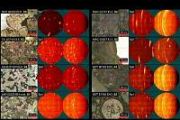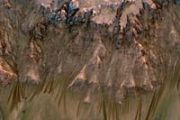
Copernical Team
'Lonely cloud' bigger than Milky Way found in a galaxy 'no-man's land' by UAH physics team
 A scientifically mysterious, isolated cloud bigger than the Milky Way has been found by a research team at The University of Alabama in Huntsville (UAH) in a "no-man's land" for galaxies.
The so-called orphan or lonely cloud is full of hot gas with temperatures of 10,000-10,000,000 degrees Kelvin (K) and a total mass 10 billion times the mass of the sun. That makes it larger than the mass
A scientifically mysterious, isolated cloud bigger than the Milky Way has been found by a research team at The University of Alabama in Huntsville (UAH) in a "no-man's land" for galaxies.
The so-called orphan or lonely cloud is full of hot gas with temperatures of 10,000-10,000,000 degrees Kelvin (K) and a total mass 10 billion times the mass of the sun. That makes it larger than the mass Physicists observationally confirm Hawking's black hole theorem for the first time
 There are certain rules that even the most extreme objects in the universe must obey. A central law for black holes predicts that the area of their event horizons - the boundary beyond which nothing can ever escape - should never shrink. This law is Hawking's area theorem, named after physicist Stephen Hawking, who derived the theorem in 1971.
Fifty years later, physicists at MIT and elsew
There are certain rules that even the most extreme objects in the universe must obey. A central law for black holes predicts that the area of their event horizons - the boundary beyond which nothing can ever escape - should never shrink. This law is Hawking's area theorem, named after physicist Stephen Hawking, who derived the theorem in 1971.
Fifty years later, physicists at MIT and elsew Trailblazing woman pilot, 82, to fly into space with Bezos
 Barrier-breaking woman aviator Wally Funk, 82, will join Jeff Bezos this month on the first crewed spaceflight for the billionaire's company Blue Origin, the firm announced Thursday.
The trip is 60 years overdue for Funk, who was one of the Mercury 13 - the first women trained to fly to space from 1960-1961, but excluded because of their gender.
On July 20, she will become the oldest pe
Barrier-breaking woman aviator Wally Funk, 82, will join Jeff Bezos this month on the first crewed spaceflight for the billionaire's company Blue Origin, the firm announced Thursday.
The trip is 60 years overdue for Funk, who was one of the Mercury 13 - the first women trained to fly to space from 1960-1961, but excluded because of their gender.
On July 20, she will become the oldest pe Rogue Space and Orbital Assembly want to lease 2 Laura Orbot spacecraft
 Rogue Space Systems Corporation announced the signing of a Letter of Intent by Orbital Assembly Corporation (OAC), the world's first large scale space construction company, to lease two Laura Orbital Robot (Orbots) spacecrafts for Orbital Assembly's P-STAR Mission to launch construction technologies for the first low gravity space hotel.
As part of the agreement, Rogue Space and Orbital As
Rogue Space Systems Corporation announced the signing of a Letter of Intent by Orbital Assembly Corporation (OAC), the world's first large scale space construction company, to lease two Laura Orbital Robot (Orbots) spacecrafts for Orbital Assembly's P-STAR Mission to launch construction technologies for the first low gravity space hotel.
As part of the agreement, Rogue Space and Orbital As NASA offers $45M to solve risks for astronaut Lunar landing services
 NASA is preparing to establish a regular cadence of trips to the Moon under Artemis. To help the agency fine-tune its approach, NASA will award firm fixed-price, milestone-based contracts of up to $45 million for commercial-led work under a broad agency announcement released Thursday.
NASA is seeking new work to mature designs and conduct technology and engineering risk-reduction tasks for
NASA is preparing to establish a regular cadence of trips to the Moon under Artemis. To help the agency fine-tune its approach, NASA will award firm fixed-price, milestone-based contracts of up to $45 million for commercial-led work under a broad agency announcement released Thursday.
NASA is seeking new work to mature designs and conduct technology and engineering risk-reduction tasks for Eye of ESA's asteroid mission
 This is the main camera that ESA's Hera mission for planetary defence will be relying on to explore and manoeuvre around the Didymos asteroid system.
Hera - named after the Greek goddess of marriage - will be, along with NASA's Double Asteroid Redirect Test (DART) spacecraft, humankind's first probe to rendezvous with a binary asteroid system, a little understood class making up around 15%
This is the main camera that ESA's Hera mission for planetary defence will be relying on to explore and manoeuvre around the Didymos asteroid system.
Hera - named after the Greek goddess of marriage - will be, along with NASA's Double Asteroid Redirect Test (DART) spacecraft, humankind's first probe to rendezvous with a binary asteroid system, a little understood class making up around 15% Perseverance Mars rover to use AutoNav in new self driving mode
 NASA's newest six-wheeled robot on Mars, the Perseverance rover, is beginning an epic journey across a crater floor seeking signs of ancient life. That means the rover team is deeply engaged with planning navigation routes, drafting instructions to be beamed up, even donning special 3D glasses to help map their course.
But increasingly, the rover will take charge of the drive by itself, us
NASA's newest six-wheeled robot on Mars, the Perseverance rover, is beginning an epic journey across a crater floor seeking signs of ancient life. That means the rover team is deeply engaged with planning navigation routes, drafting instructions to be beamed up, even donning special 3D glasses to help map their course.
But increasingly, the rover will take charge of the drive by itself, us Billionaire blast off: Richard Branson plans space trip ahead of rival Bezos
 Call it a space race for billionaires: British mogul Richard Branson one-upped rival Jeff Bezos on Thursday, announcing that he too will blast beyond Earth's atmosphere - as many as nine days ahead of the Amazon founder.
With both tycoons having created space tourism companies and positioned themselves as leaders in the suborbital-flights-for-the-wealthy sector, the move signaled clear if n
Call it a space race for billionaires: British mogul Richard Branson one-upped rival Jeff Bezos on Thursday, announcing that he too will blast beyond Earth's atmosphere - as many as nine days ahead of the Amazon founder.
With both tycoons having created space tourism companies and positioned themselves as leaders in the suborbital-flights-for-the-wealthy sector, the move signaled clear if n Earth from Space: North Frisian Islands

Part of the Frisian Islands, a low-lying archipelago just off the coast of northern Europe, is visible in this image captured by the Copernicus Sentinel-2 mission.
First high-altitude drop test success for ExoMars parachute

After several weeks of bad weather and strong winds, the latest pair of high-altitude drop tests of the ExoMars parachutes took place in Kiruna, Sweden. The 15 m-wide first stage main parachute performed flawlessly at supersonic speeds, while the 35 m-wide second stage parachute experienced one minor damage, but decelerated the mock-up of the landing platform as expected.






























